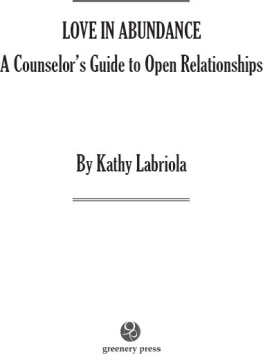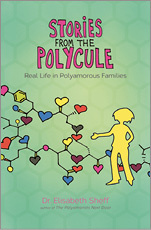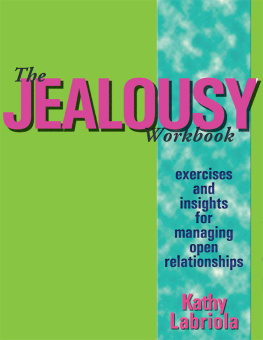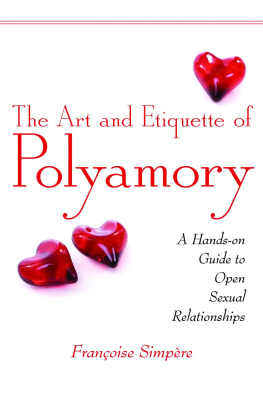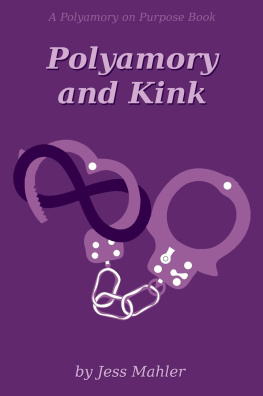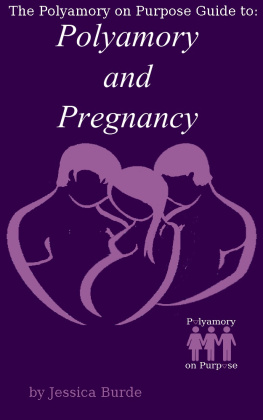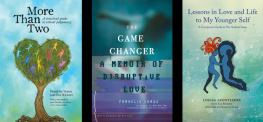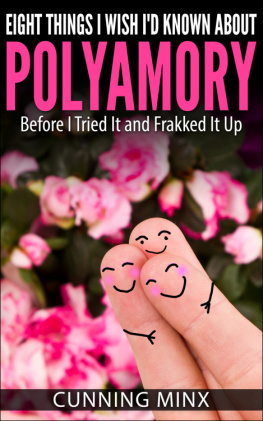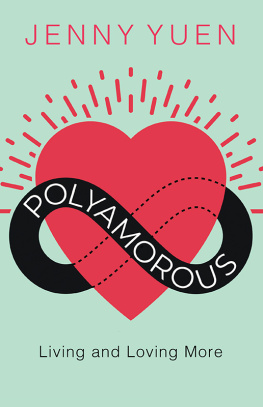
LOVE IN ABUNDANCE
A Counselors Guide to Open Relationships
By Kathy Labriola

2010 by Greenery Press, Inc.
All rights reserved. Except for brief passages quoted in newspaper, magazine, radio, television or Internet reviews, no part of this book may be reproduced in any form or by any means, electronic or mechanical, including photocopying or recording or by information storage or retrieval system, without permission in writing from the Publisher.
Cover design by Hollis Duncan
Published in the United States by Greenery Press, P.O. Box 5280, Eugene, OR 97405, www.greenerypress.com.
Distributed by SCB Distributors, Gardena, CA.
This book is dedicated to Rick and Eric, who should each receive a Labriola Endurance Medal for sticking with me all these years through all of lifes little twists and turns.
PART ONE
Polyamory and Open Relationships
What Are They And How Do They Work?
Introduction to Open Relationships and Polyamory
T wo terms, open relationships and polyamory, are used almost interchangeably, and can be very confusing. Because these terms are relatively new to the English language, there is little consensus on their exact meanings. In general, both refer to having the freedom to be sexually and/ or emotionally involved with more than one person. While some may quibble about subtle differences in these terms, it doesnt really matter what you call your relationship or lifestyle as long as you are clear with your partner(s) about exactly what you mean. This book uses both terms and considers them identical.
There is a key difference between these arrangements and old-fashioned infidelity or cheating. Open relationships and polyamorous relationships are explicitly designed to be practiced honestly, with the mutual consent of all parties where no one is deceived and everyone chooses to enter this type of relationship.
Some people in these types of alternative relationships are married or live with a primary lover or spouse, but occasionally have casual sexual relationships outside their marriages. Some have more than one committed long-term relationship concurrently. Others are in group marriages, living with several adults who share sexual and spousal relationships. Still other people are inclined toward many relationships of a less committed nature, and are not seeking marriage or long-term relationships. Part One of this book will cover the different types of open relationships and the pros and cons of each model.
Many other people embrace the theory of open relationships and enjoy having the option of having more than one lover or spouse if they should desire, but may not have the time or energy for more than one relationship, or may not have met the right person or people to enter into such an arrangement. So even though they consider themselves polyamorous, they may not practice polyamory but they like having the option and having an agreement with their partner that another relationship will be acceptable if it does happen. For many people, having the freedom to choose additional relationships is as important and fulfilling as actually acting on this option and having other lovers.
Relationships outside the monogamous paradigm are nothing new; they have been practiced since the beginning of humankind. However, until recently, polyamory was considered immoral, deviant behavior in most Western cultures, was identified as a major taboo in most religions, and was generally done secretlycheating on ones wife or husband and lying about it, while pretending to be the faithful spouse.
Due to sexism and womens economic dependence on men throughout most of history, men could usually get away with extramarital affairs, mistresses, sexual relationships with prostitutes, and even having several wives, because womens powerless economic and political position forced them to accept any and all behavior from their husbands. Women were much less at liberty to stray outside of marriage and have other relationships. This confinement was partly because their primary responsibility for home and children seriously restricted their mobility, partly due to lack of effective birth control methods, and partly because the adulteress was usually severely punished by society for her transgression. However, the philandering husband generally was tolerated with a boys will be boys attitude.
This double standard continues today in most of the world. However, in Western industrialized nations, we have benefited from the sexual revolution of the 1960s and 70s. New freedoms were fueled by the advent of effective birth control methods such as birth control pills, the legalization of abortion, and by women entering the paid labor force and achieving more economic independence from men. This transformation of sexual mores gave both men and women the opportunity to experiment with many new types of relationships and made it possible to reject the rigid sex roles and limitations of monogamous relationships.
Why Do Some People Want More Than One Partner?
No one knows the answer to this question, just as no one knows exactly why some people are gay, others bisexual, and still others are straight. Many people are very happy with monogamous relationships, and believe that a monogamous relationship promises greater security, stability, and protection from HIV and other sexually transmitted infections. Such people may feel more fully loved and feel they can experience deeper intimacy in an exclusive relationship with one person. Or they may feel that monogamy is just simpler and more feasible to fit into their busy lives than more open relationships.
On the other hand, many people try to live a monogamous lifestyle and find it just does not meet their needs. They come to believe that it is unrealistic to expect any one person to fulfill all their needs for intimacy, companionship, love, and sex, for the rest of their lives. Many people practice serial monogamyhaving one monogamous relationship after another, each one ending due to some area of incompatibility or dissatisfaction. Many people spend their whole life searching for the perfect mate, only to find themselves dissatisfied time after time. They cannot maintain a monogamous relationship over the long haul, because one partner or the other cheats and has secret affairs, or one partner loses interest in the other, or one or both partners discover conflicts or incompatible needs. Many people decide to explore more open forms of relationships as a way of avoiding some of the problems they have experienced in monogamous relationships.
What Does This Type of Relationship Offer?
Boiled down to its essence, people are drawn to an open relationship because they want either More or Different. If they are looking for More, its because they love everything they are getting in their current relationship(s) but are not getting quite enough: not quite enough romance, attention, sex, time, or specific activities. So they want to supplement their current relationship by getting some of that missing quantity with someone else.
If, instead, they want Different, they enjoy and value their current relationship, but feel they are missing one or more crucial ingredients that really would make them happier, so they are seeking that other something from someone else. For instance, they want a different type of sexual activity (my partner doesnt like oral sex), or a partner of a different gender, a person who is more romantic or adventurous, someone with whom they have some specific shared interest (my partner hates camping and I love it), or the novelty of sexual and romantic variety with a new or different person.
Next page
